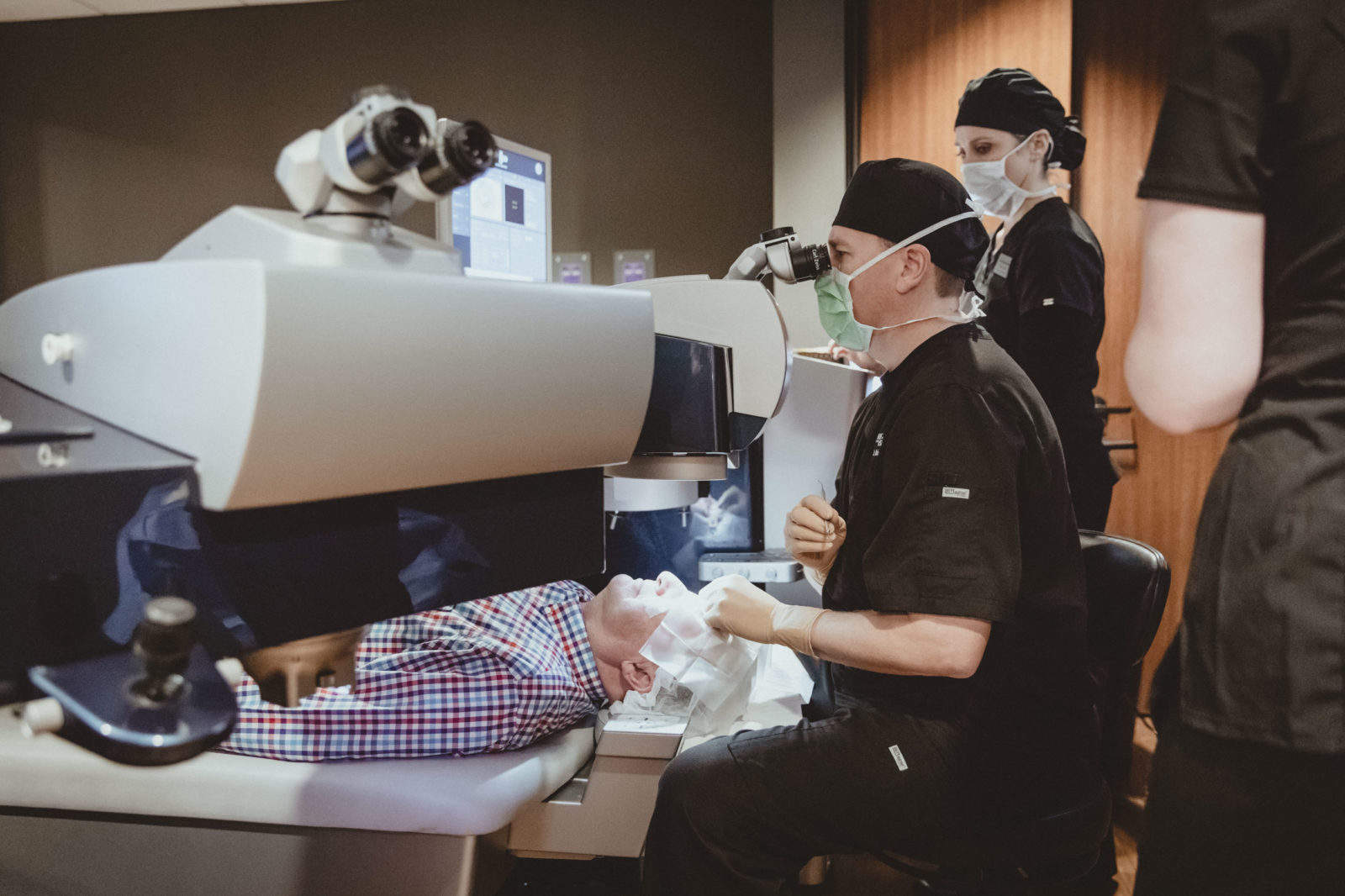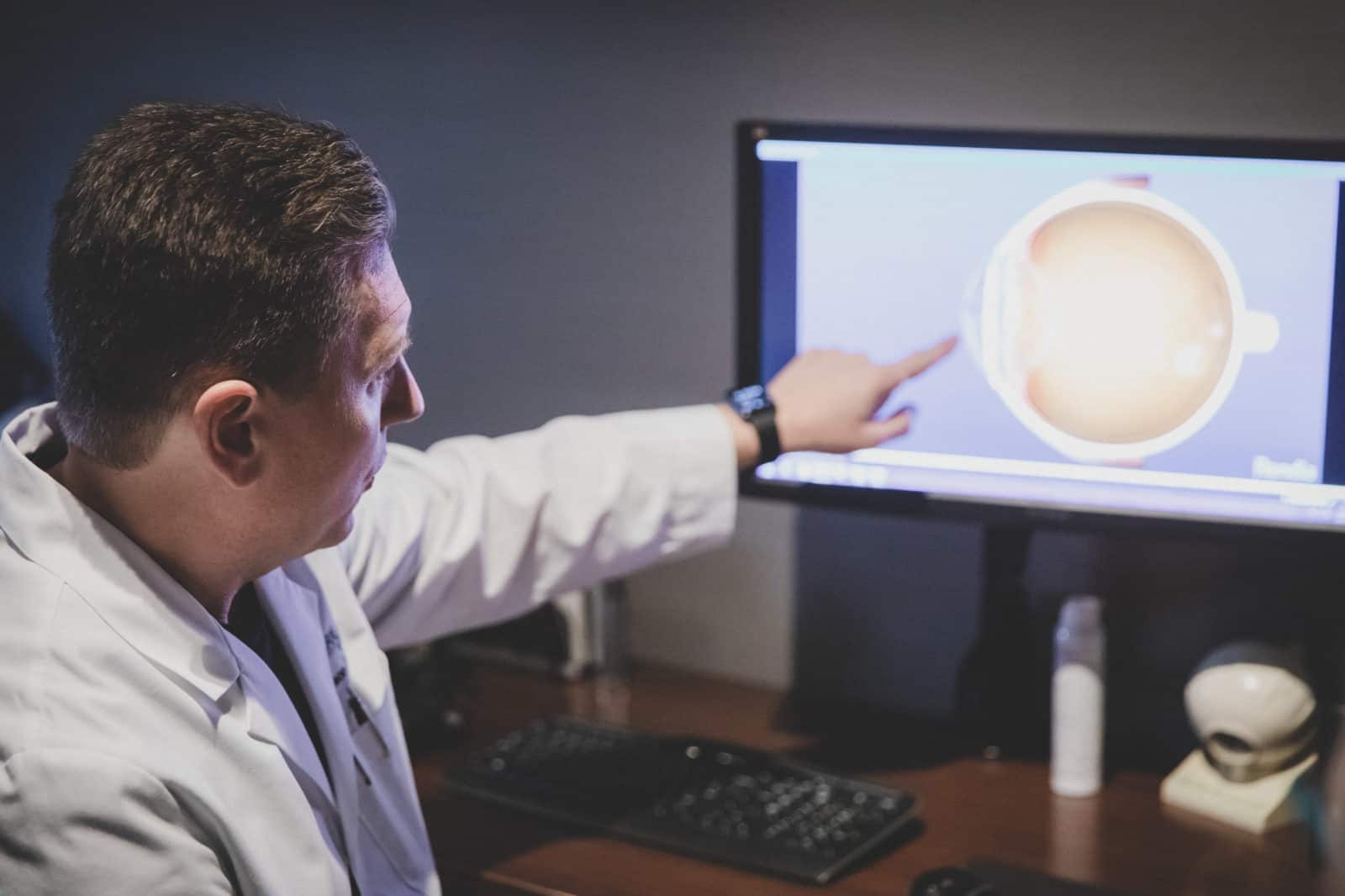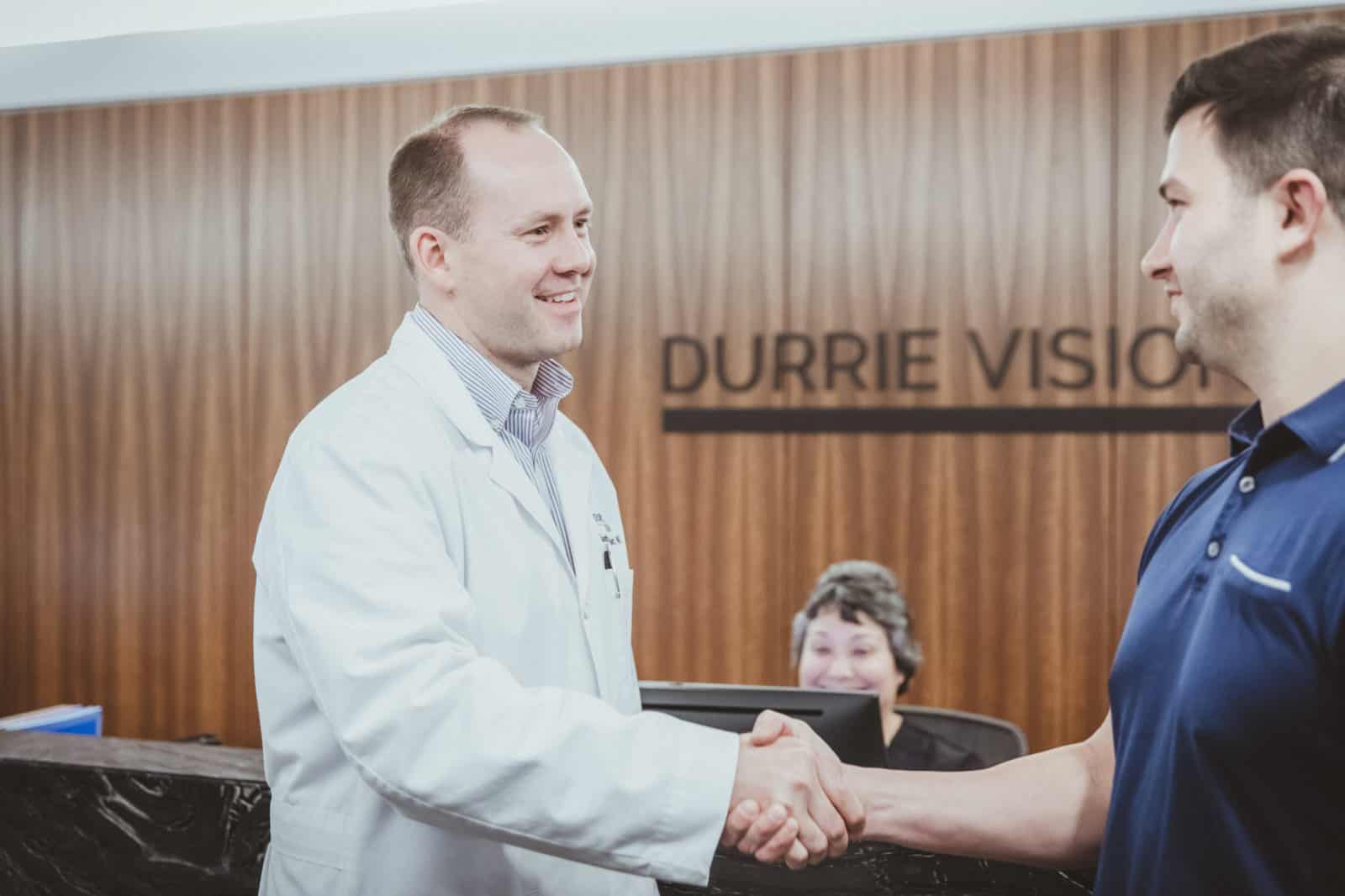Refractive errors are a group of common eye conditions that make it difficult to see clearly. In the United States alone, more than 150 million people suffer from at least one type of refractive error. But as ocular technologies have advanced, doctors are more equipped than ever to treat refractive errors and help you regain visual clarity.
However, the key to treatment is understanding that not all refractive errors are the same; therefore, they won’t always be treated the same way. While glasses and contact lenses are a common way people aid vision problems temporarily, they don’t actually treat any underlying conditions.
Our refractive surgeons at Durrie Vision focus on correcting the refractive error to help our patients live freely without the daily hassle of contacts or glasses. Read on to learn more about the different types of refractive errors and how laser eye surgery can bring long-lasting results.
What is a refractive error?

A refractive error is a condition resulting from the way your eye bends light to create images. To understand how the light affects vision, let’s briefly go over how the eye works. Think of your eye as a camera. For a camera to create an image, light must be present. Light must also focus on the right place to build a clear image. The same applies to your eyes.
Vision begins with your cornea. This is the big, clear window in front of the iris that controls and focuses about 70% of the light that enters your eye. When light enters, the cornea refracts (bends) that light onto the lens. The lens, which sits behind the pupil, is the second focus. Ideally, the cornea and lens work together to place light directly onto the retina (film on the back of the eye) for a clear, single image.
When the cornea is too steep or too flat, that affects the cornea’s focusing power. So instead of light focusing directly on the retina, it can focus in front of or behind it, leading to a blurred image.
There are four main types of refractive errors:
- Nearsightedness (myopia)
- Farsightedness (hyperopia)
- Astigmatism
- Presbyopia

Nearsightedness (Myopia)
Nearsightedness is a result of a cornea that’s too steep. A nearsighted person has too much focusing power, which causes light to focus before it hits the retina. If you’re nearsighted, you may not have a problem seeing up close, but as things get further and further away, your vision becomes blurry.
Myopia typically arises in childhood and steadily worsens until around the late teens or early 20s. Once you reach ocular maturity, you can seek out more lasting and convenient vision solutions, such as laser vision correction.
Farsightedness (Hyperopia)
Opposite to nearsightedness, people who are farsighted have a cornea that is too flat. When light passes, it focuses behind the retina, distorting near vision. Farsightedness should not be confused with presbyopia, which is an age-related condition affecting the lens inside the eye, not the cornea.
Astigmatism
Those with astigmatism have an irregular shaped cornea. In an ideal circumstance, the cornea and lens are smooth and rounded just right to refract light. However, with astigmatism, the roughness and curve irregularity can affect both near and far vision. It is common for someone to have astigmatism along with other types of refractive errors such as nearsightedness or farsightedness.
Laser Surgery Options for Astigmatism Correction →
Presbyopia
As you age, your internal lens stiffens and loses its ability to zoom. Beginning in your forties, you may notice that you have to hold a book out further and further to read. Then, when your arms aren’t long enough, you’re forced to pick up a pair of reading glasses or bifocals. In this case, instead of reshaping the cornea to better refract light, a refractive surgeon replaces the internal lens with an artificial one that isn’t affected by aging.
Left untreated presbyopia continues to progress, leading to further clouding and yellowing of the lens, before ultimately developing into a cataract. For this reason, more and more people choose to treat presbyopia before cataracts form and negatively impact their vision.
6 Early Cataract Symptoms You Should Know →
How to treat different types of refractive errors

The only way to treat refractive errors without requiring glasses or contact lenses is via refractive surgery. For corneal-related issues such as nearsightedness, farsightedness, and astigmatism, laser vision correction procedures work by reshaping the cornea to optimize its focusing power. For example, if you are nearsighted and have a cornea that’s too steep, your surgeon will flatten the cornea either using advanced laser technology. At Durrie Vision, we use the latest laser technology for all of our corrective eye surgeries.
These procedures include:
SBK Advanced LASIK: Developed by Daniel Durrie, MD and Stephen Slade, MD, our innovative process is the most advanced form of LASIK surgery and provides better results with faster recovery times.
During the procedure, we use a femtosecond laser to create a micro-thin circular flap in the cornea. Next, a computer-guided excimer laser reshapes the cornea to correct the refractive error.
4 Questions to Ask Your LASIK Provider →
Advanced Surface Ablation (ASA): Advanced Surface Ablation is an alternative solution for people who may not be candidates for LASIK due to limited corneal thickness, scarring, previous eye surgery, or recreational and/or occupational demands.
Similarly to LASIK, ASA reshapes the cornea, but instead of creating a corneal flap, your surgeon removes the cornea’s outer skin (epithelium) and apply the laser directly to the cornea.
SMILE Vision Correction: SMILE (Small Incision Lenticule Extraction) is a minimally invasive procedure designed to correct mild nearsightedness and astigmatism. During the surgery, we remove a disc-shaped piece of corneal tissue (lenticule) to reshape and flatten the cornea.
5 Things to Know about SMILE Vision Correction →
For age-related vision conditions such as presbyopia or cataracts, there are advanced surgical options that also focus on the lens. Unlike the cornea that can be reshaped, the lens must be replaced with an artificial one designed to provide focusing power customized to the patient’s needs. As a result, they provide a long-lasting vision solution for conditions like presbyopia and cataracts, while also addressing any present refractive error such as nearsightedness, farsightedness, or astigmatism.
Lens replacement procedures include:
Refractive Lens Exchange: Refractive Lens Exchange is a popular surgery for people with presbyopia. During an RLE procedure, we replace your dysfunctional natural lens with a premium intraocular lens designed to provide focusing power at near, intermediate, and far distances.
Refractive Cataract Surgery: The same surgery applies for a refractive cataract procedure. Even if your presbyopia has formed into cataracts, we can still use lens exchange to replace the cloudy lens. However, unlike traditional cataract surgery, we also go in and correct other types of refractive errors you may have by reshaping corneal tissue.
Your Guide to Refractive Cataract Surgery →
How to choose the right procedure for your refractive error

The good news is, you don’t have to choose. That’s what we’re here for. To ensure you’re recommended the right procedure for your eyes and lifestyle, it’s best to visit a refractive surgeon that offers a full range of refractive vision correction procedures rather than a LASIK-only clinic.
Durrie Vision is the only eye center in the region that specializes in six corrective eye surgeries. That means when you visit us, we are equipped to find a procedure that best fits your individual needs and your condition. While LASIK may not be for everyone, we’ve found that most of our patients can benefit from another surgery if they aren’t a candidate for LASIK. In fact, with our resources, we rarely turn patients away.
We start with an in-depth consultation process—Advanced Ocular Analysis (AOA)—which screens you for each procedure, not just LASIK. Using the most advanced diagnostic testing and cutting-edge technology available, we provide high resolution 3D images of your entire eye to get a detailed glimpse of your unique ocular anatomy.
Our AOA is a combination of the most advanced diagnostics in one exam. These diagnostics include:
- Refraction
- Corneal mapping
- Eyelid gland structure and tear film analysis
- Retinal and macular imaging
- Crystalline lens evaluation
- Endothelial cell count
- Optical quality assessment
- Glaucoma screening
- Optic nerve analysis
- Intraocular pressure measurement
Because of the detail that goes into this appointment, our AOA process typically takes about an hour and a half, including 20 minutes of one-on-one time with your surgeon.
Get started with refractive eye surgery at Durrie Vision

Our number one goal is to help our patients better maneuver through life with the best vision possible. No matter the procedure, we use innovative laser technology to maximize precision so our patients receive the best results possible. We stick with our patients every step of the way, from the consultation all the way to the final visit.
For over 30 years, our doctors at Durrie Vision have been leaders in refractive surgery, offering all six options available today. To get started, schedule your AOA or take our easy, online self-candidacy test.
Schedule a Consultation | Self-Candidacy Test

Author Bio: Jason E. Stahl, MD
Top Doctors: https://www.castleconnolly.com/top-doctors/jason-e-stahl-ophthalmology-129cc002150
Best Cataract Surgeons: https://bestcataractsurgeons.com/cataract-surgeons/jason-e-stahl/

